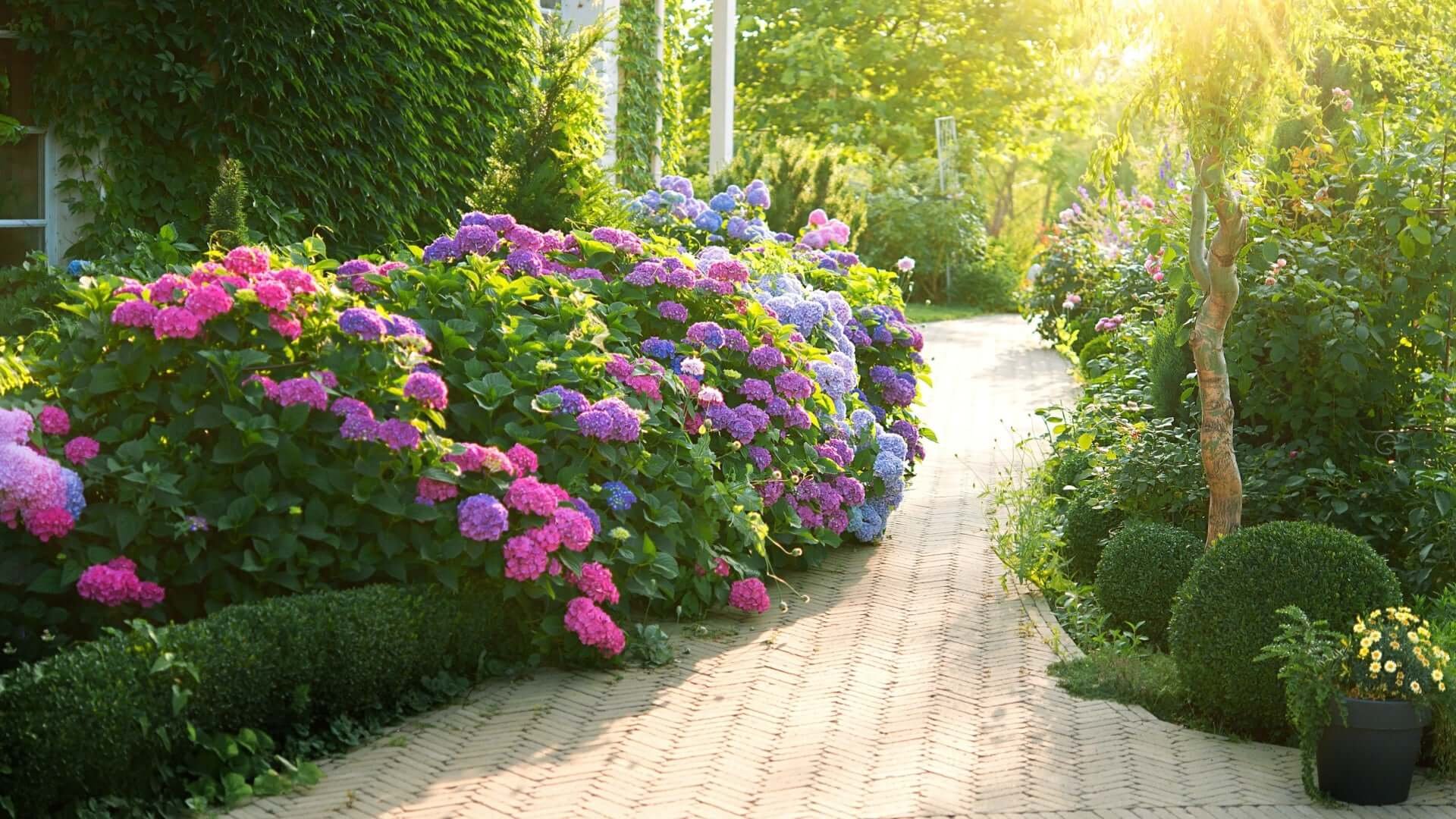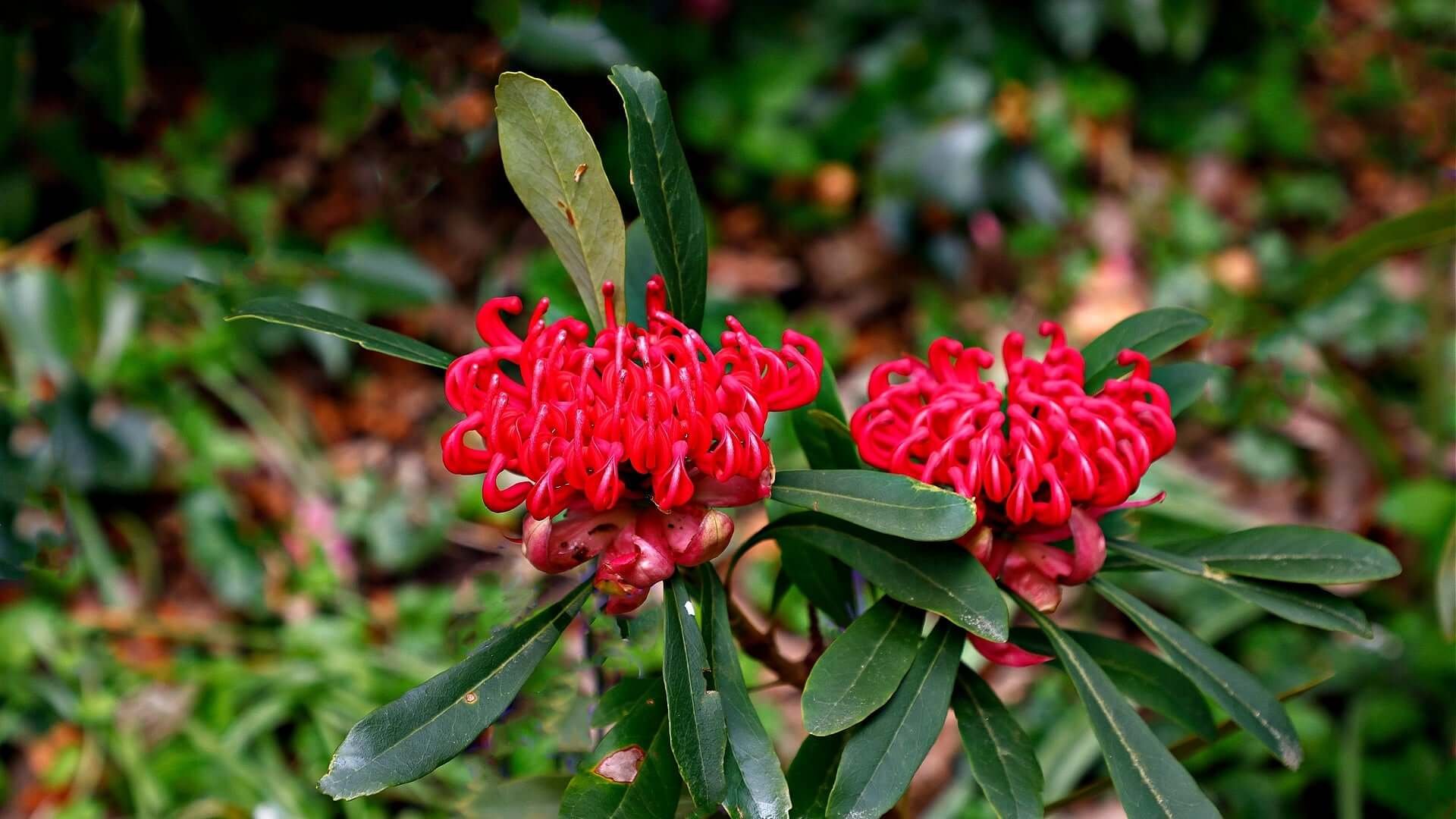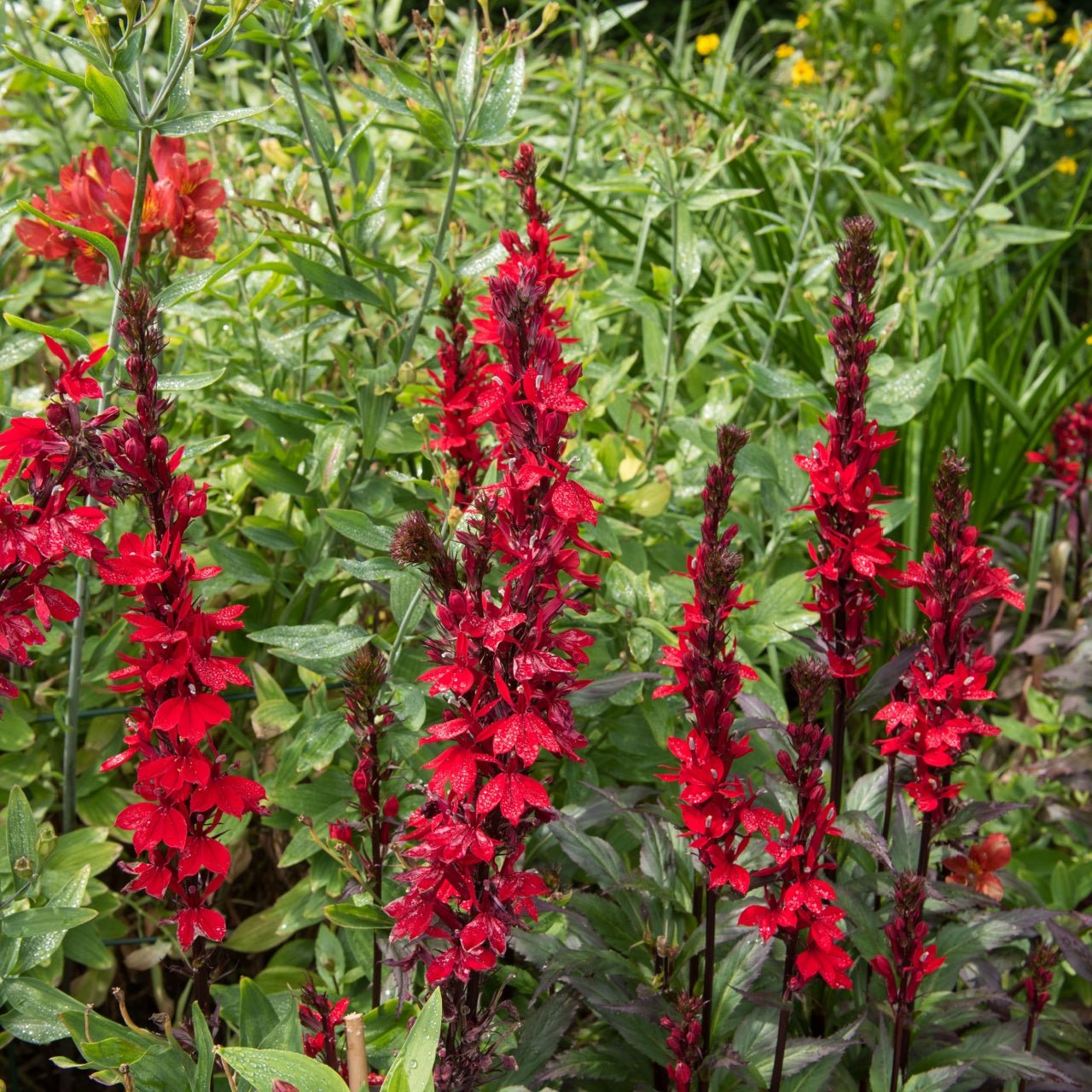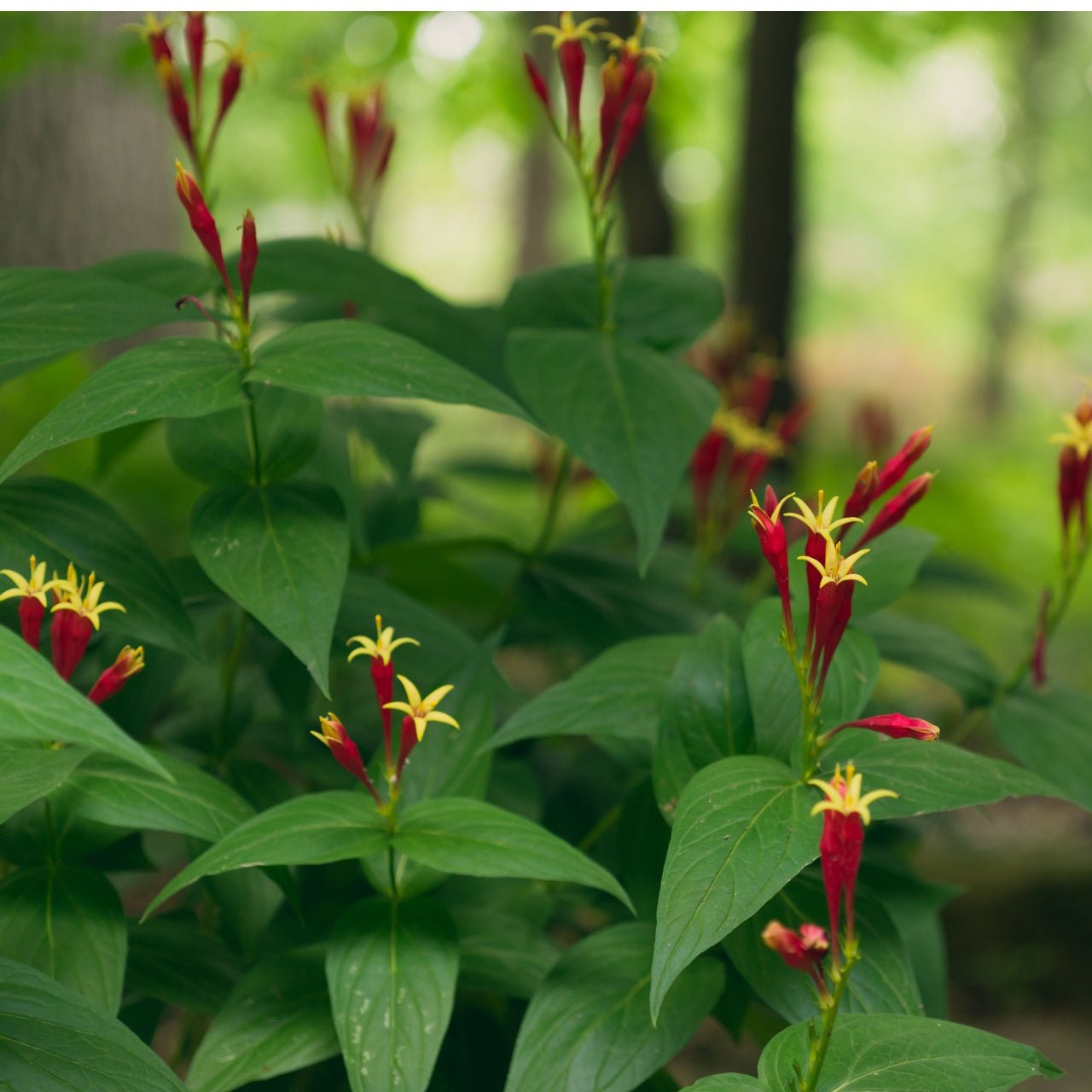Red flowers have long been celebrated for their eye-catching beauty and remarkable ability to draw beneficial insects to the garden. In exploring native red blooms, we will explore four standout species: Monarda Bee Balm, Cardinal Flower, Spigelia Indian Pink, and Red Trillium. Not only do these plants bring splashes of brilliant color to the landscape, but they also play an essential role in helping pollinators and wildlife.
Monarda Bee Balm: The Hummingbird Magnet
Monarda Bee Balm (Monarda didyma) is a beloved native perennial that creates a brilliant display of red, tubular flowers from mid-summer to fall. One of the most fascinating aspects of this plant is its ability to attract hummingbirds, who are drawn to its nectar-rich blooms. Additionally, various species of bees and butterflies make frequent visits to the plant, making it a pollinator powerhouse in any garden.

Monarda prefers rich, well-draining soil with a slightly acidic to neutral pH. Though it thrives in moist environments, it can tolerate drier conditions once established. Gardeners will find that Bee Balm performs best in total sun but can also handle partial shade, especially in hot summers. The plant's aroma and flowers also make it less appealing to deer, offering an extra benefit to those in wildlife-heavy areas. By incorporating Monarda into your garden, you enhance its visual appeal and invite various beneficial insects and hummingbirds.
Cardinal Flower: A Wetland Beauty
The Cardinal Flower (Lobelia cardinalis) offers some of the most striking red blooms in native plants. It often grows along streams and wetlands. Its deep scarlet flowers are tubular, which makes them particularly attractive to hummingbirds. Butterflies and bumblebees are also frequent visitors to this beauty, taking advantage of its high nectar content.

Cardinal Flower thrives in consistently moist soil, which makes it an excellent choice for areas near ponds, streams, or rain gardens. It prefers rich, well-draining soils, and though it is somewhat adaptable, it will perform best in consistently moist conditions. Cardinal Flower grows well in full sun to partial shade. In hot summers, a little shade in the afternoon can help prevent wilting. While it prefers the astonishing, shaded margins of woodlands in its natural habitat, it can easily be adapted to sunny areas as long as water is abundant. This plant adds color and is a vital nectar source for hummingbirds and butterflies, especially during late summer when other flowers may begin to fade.
Spigelia Indian Pink: Delicate Yet Dazzling
Spigelia Indian Pink (Spigelia marilandica) may be less common than the other red-flowered natives, but its beauty is unmatched in the garden. This plant produces unique red tubular flowers with yellow tips, creating a vivid contrast that lures hummingbirds and butterflies. The long-lasting blooms appear in late spring and summer, delivering a burst of color just as other plants come into their own.

Indian Pink thrives in rich, well-draining soil with plenty of organic matter. While it enjoys moist conditions, it can tolerate periods of drought once established, making it adaptable to various garden settings. It prefers partial shade to full shade, which makes it an excellent choice for woodland gardens or areas with dappled sunlight. The Spigelia Indian Pink is perfect for naturalistic garden designs, offering a visual treat and a valuable nectar source for pollinators. Its vibrant flowers sustain hummingbirds while attracting bees and other beneficial insects. The foliage remains tidy and disease-resistant, making it an easy-care addition to shady gardens.
Red Trillium: Woodland Elegance
Red Trillium (Trillium erectum), also known as Wake Robin, is a stunning native wildflower that graces shaded, wooded areas with deep red, three-petaled flowers. This shade-loving perennial is an excellent choice for woodland gardens and attracts a variety of pollinators, including flies and beetles, which are drawn to the plant's faint scent. While Red Trillium may not be as showy to human noses, its smell is an essential lure for these often overlooked pollinators.

This delicate beauty thrives in moist, rich soil with plenty of organic matter. It likes slightly acidic to half and half soil conditions and does best in full to partial shade, making it ideal for forested areas or shade gardens. The plant requires excellent, consistent moisture, so mulching the bottom can help keep soil moisture and prevent it from drying out. Unlike some native red flowers that need sun, Red Trillium is happiest in the deep shade of mature trees or tucked into the corners of a woodland garden.
Though the flowers may be less glamorous than the hummingbirds attracted to Monarda and Cardinal Flower, they play an equally important role in the ecosystem. Red Trillium's ability to thrive in shady areas makes it a unique addition to gardens designed with biodiversity in mind. It provides a critical food source for specialized pollinators, adding an understated elegance.
Save Wildlife With Red Native Flowers
These native red flowers bring a sense of vibrancy and elegance to gardens and support a range of pollinators and wildlife. Whether you are designing a garden for sun, shade, or wet conditions, Monarda Bee Balm, Cardinal Flower, Spigelia Indian Pink, and Red Trillium offer adaptable solutions that provide color, texture, and habitat value. By choosing native species, you contribute to local ecosystems while creating a garden space that will captivate both human and animal visitors.
Read more

Native yellow flowers have long been cherished in gardens for their rich color and power to lure pollinators. Among them, Black-Eyed Susan, Wood Poppy, Evening Primrose, and Maximilian Sunflower ar...

Purple flowers have a special allure, providing striking color while attracting beneficial insects to the garden. For those looking to embrace native plants, a selection of wildflowers, such as Wil...




